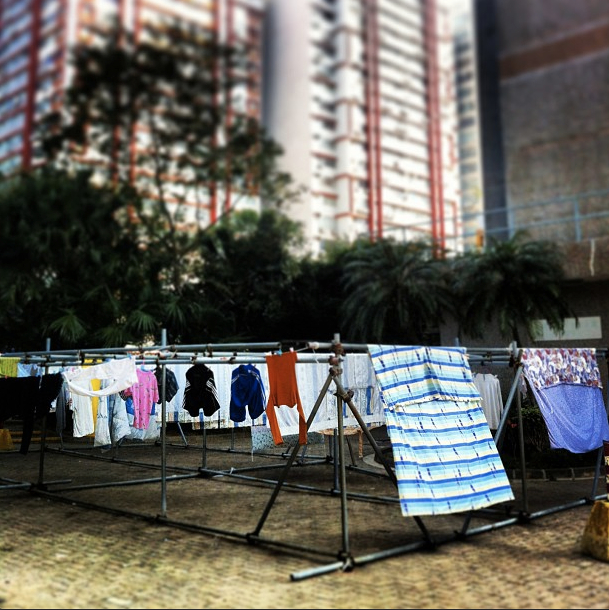typicalplan = penning |
||
about: HONG KONG HOMELINESS. |
||
Far from the modernist ideal of the rationally planned highrise city, much of Hong Kong is like a medieval town on steroids. A lack of planning has conspired with extreme geography to produce this idiosyncratic urban landscape. Narrow streets are contorted in three dimensions and lined with disproportionally high buildings. Towering facades link up to line the streets with continuous walls of concrete and glass.
Not here any of the rules or regulations to mitigate density, no podium schemes or setback requirements. No rationalist measures to organise the city, no grids or apparent grand organising principles. Hong Kong is where extreme urbanity meets wild nature. Not just in the juxtaposition of the city with the mountain landscape, but also in the uncontrolled organic way the city has developed. This is the prototypical urban jungle.
In Hong Kong the modernist virtues of cleanliness, daylight and spaciousness have been replaced by a much more nebulous commodity, not usually associated with a metropolis: homeliness. This is an unexpected by-product of a festering building frenzy that has hemmed in and precisely defined all open urban space.
Homeliness 1: Verticality.
The abundance of built mass gives public space an enclosed quality lacking in the ideal cities envisioned by modernism. The sheer verticality, out of proportion with the cramped public space at ground level, shrinks the scale of the latter down to that of a reassuring interior. A lack of sunlight and distant perspectives add to the feeling of claustrophobic intimacy. Life pushes into the tiniest alleyway or service corridor. An inescapable but ultimately reassuring sense of community springs eternal in this pressure cooker of a city.
Homeliness 2: Randomness.
Hong Kong has developed into the ultimate utilitarian city, a purely functional expression of capital flows and investment.
Liberated from the restrictions of taste and quasi-unfettered by town planning guidelines, the haphazard collage of clumsy architectures results in an endlessly fascinating cityscape. On the scale of the individual building, the bland facades are customised ad libitum: a blank canvas for a patchwork of AC units, window layouts and corrugated metal canopies. Old apartments sport outgrowths wherever feasible; commercial spaces are emblazoned with signs and adverts in every shape and size.
Hong Kong is chaos, and like an overstuffed boudoir either its claustrophobia repels you or its nonthreatening informality embraces you in a way you would not expect in the densest city in the world.
Homeliness 3: Overflow.
The cramped living conditions prevalent in Hong Kong are widely publicised and bemoaned. Its consequences reverberate far beyond the private sphere as domestic activities spill over into public space. Senior citizens are raucously gambling in a covered square, a kitchen aide is slicing fish on an upturned bucket in a side alley, hundreds of Filipina maids are picnicking underneath the HSBC headquarters on their day off.
When you hardly have a living room to speak off, the whole city becomes your lounge.
Homely No More.
Nowadays new property developments in Hong Kong are doing away with all that unsightly business. Rational planning has stepped in to safeguard public interest. Greenery is provided, roads widened, buildings kept at reasonable distances. Pastel-tinted elevation patterns visually break down the overwhelming building masses. Newly enforced laws govern add-on structures and other visible modifications to buildings.
There is a drive to humanise the spatial experience of Hong Kong, to take a step back from the overwhelming surroundings. But one has to wonder whether in the process we are not losing the unique feeling of a sheltered life which nestles in the cracks of bigness, in the reassuring shadows of what is too big to fathom.
Literature:
Geopolitics of Home: Public Domesticity in Hong Kong and London, Katherine Brickell
year: 2013
author: Hans Leo Maes / TypicalPlan






